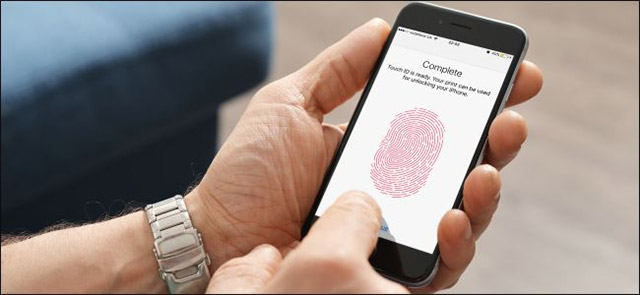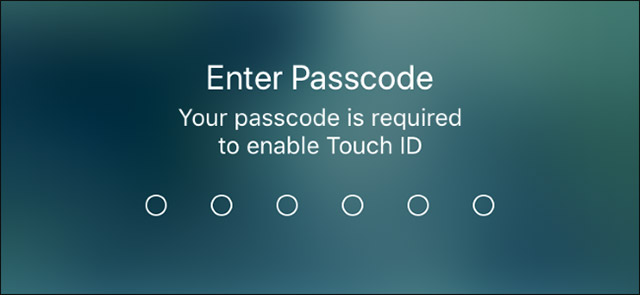The Touch ID and Face ID do not make you safer, why?
It is impossible to acknowledge that the Touch ID and Face ID are extremely great features on smartphones today.We love and use these technologies everyday.But after all, we should put them into the category of utility features more reasonable than security features, and even in the United States, you will get less legal protection when using these This feature.When necessary, you should temporarily disable them.
This also applies to Android phones with fingerprint sensors, iris scanning or other similar biometric features.
With Face ID, just look at the phone in the range of 0.9-1.2m, it will automatically unlock.This means if someone holds your phone from the other side of the table, when you look at it, you will unlock your phone for that person.
Ars Technica has shown that this technique can be applied in many border areas, where anyone traveling internationally must bear serious risks due to national laws.If for some reason you don't want to unlock your phone, but security agents may force you to look at the phone, it will be open and they can access a large amount of information stored inside. .For example, on the US border, a special land, where you will have to overcome many complex security measures and negotiation is not approved.
This technique can also be used in many border control areas of many other countries.Anyone traveling internationally has to take a serious risk of privacy.You may not want border security officers to easily exploit personal information in your phone.
Using a PIN, you will get more legal protection
 The Touch ID and Face ID do not make you safer, why? Picture 1
The Touch ID and Face ID do not make you safer, why? Picture 1
In the US, the rules that apply to the Touch ID and Face ID are even stricter than people think.The court ruled that law enforcement had the right to force you to provide fingerprints or look at the phone to unlock it for investigation.However, the problem is that they are not allowed to force you to unlock your phone if you use a password, PIN or password.
In other words, the US court has relied on the fifth revision of the constitution to make the statement.The content of this revision has a law stipulating that people will not be forced to unlock their phones when they use a PIN, but not in the case if they use fingerprint unlocking or identification. face or other biometric data.Why is that?
This fifth revision protects you from being forced to provide information in case you cannot control your behavior.For example, when you're drunk or unconscious, people can still easily unlock your phone with fingerprints and face detection.But with the PIN code everything is different, you have to be in a state of mind to provide a PIN.Also PIN code (and password) is considered to be the information you know while your biometrics is considered physical evidence you may be required to provide.Basically that means you cannot be forced to disclose the information you know (such as a password), but may be required to take an action (such as providing fingerprints, faces or biometric measures). other study).
This also applies to fingerprint unlocking and face detection on Android smartphones.
Easy to get fingerprint or face recognition than PIN code
Things are not limited to legal issues with the government.It is not difficult to list situations where fingerprint scanner and face unlock are less secure than PIN and password.
For example, a child or someone takes your phone and carefully presses your fingertips into the fingerprint sensor while you are sleeping to unlock it.That's why a child has used this method to buy $ 250 worth of goods with his parents' phones only.For Face ID, situations can also occur under such a scenario.
Is the PIN absolutely safe?
However, in fact, even strong encryption is not absolutely safe if you use it too much.A study shows that average Americans check their phones 80 times a day.Now, if you're unlocking your phone several times a day with a PIN code and regularly use it in public.The question is whether you are sure no one will see your PIN?
How to protect yourself?
 The Touch ID and Face ID do not make you safer, why? Picture 2
The Touch ID and Face ID do not make you safer, why? Picture 2
You do not need to completely turn off Touch ID or Face ID.They are still convenient, and useful features that are used by many people.When using the Touch ID or Face ID, you can temporarily disable these features when you need to cross the border or deal with a law enforcement agency.To do this, do the following:
- Use emergency mode (Emergency SOS Mode) for iPhone: To activate this mode, for iPhone 8 and above, press and hold the power button and one of the volume buttons.On iPhone 7 and earlier, quickly press the power button 5 times.The 'Emergency SOS' window will appear on the screen so you can make an emergency call if needed.The Touch ID or Face ID will also be temporarily disabled and you will have to re-enter your PIN to unlock your phone.
- Use Lockdown mode for Android phones: If you are using an Android phone from P or above, you can turn on 'Show lockdown option'.This will give you a new 'Lockdown' shortcut that you can access from your phone's lock screen.Activate it and your phone's fingerprint reader and any Smart Lock feature will be disabled until you unlock your phone with your PIN.
- Power off the phone: You can also turn off the phone, because when you turn on the power again you must provide a PIN or password to unlock it.Whether you are using an iPhone or Android phone, you will not be able to use the equivalent Touch ID, Face ID or Android features unless provided with the correct PIN.
- If you are really concerned about this, you can also completely turn off the Touch ID, Face ID or Android fingerprint unlock features and install only unlock the phone with a PIN or password.
Honestly, the PIN code can still be stolen, but this risk is not as high as for Touch ID and Face ID.
Be wary of risks
Face ID and Touch ID are really great features.However, you should pay attention to the security risks you may encounter.If you're in a situation where using Face ID or Touch ID seems a bit risky, it's best to turn it off and temporarily use only the PIN.
See more:
- How to disable Touch ID and Face ID on iOS 11 to enhance security
- How to protect email with Face ID or Touch ID on iPhone
- How to reset Face ID on iPhone X
- iPhone X cannot distinguish two twins
You should read it
- What is Face ID? How to use it?
- All future iPhones will no longer have Touch ID
- How does Apple's Face ID work?
- 8 iPhone apps can be locked with Touch ID or Face ID
- Hackers can bypass the Face ID face with just a pair of black adhesive tape
- The future of the iPhone depends on how you think Face ID
- How to disable Touch ID and Face ID on iOS 11 to enhance security
- How to set Face ID on iPhone X
- Will be able to use Face ID and Touch ID to login to iCloud on macOS Catalina and iOS 13?
- How to protect email with Face ID or Touch ID on iPhone
- How to reset Face ID on iPhone X
- 4 ways to improve Face ID stability
May be interested

How to scan websites for potential security vulnerabilities with Vega on Kali Linux

How to temporarily lock the computer when entering the wrong password many times

What are Supercookies, Zombie Cookies and Evercookies and are they harmful?

Instructions to enable / disable Windows Firewall with Command Prompt

The leading site to learn hacking skills

Instructions for using HitmanPro.Kickstart to boot the infected computer






 8 iPhone apps can be locked with Touch ID or Face ID
8 iPhone apps can be locked with Touch ID or Face ID How to set Face ID on iPhone X
How to set Face ID on iPhone X What is Face ID? How to use it?
What is Face ID? How to use it? All future iPhones will no longer have Touch ID
All future iPhones will no longer have Touch ID How does Apple's Face ID work?
How does Apple's Face ID work? 5 tips to make your Windows 10 computer more powerful
5 tips to make your Windows 10 computer more powerful